telerobotics
description: area of robotics concerned with the control of semi-autonomous robots from a distance
26 results
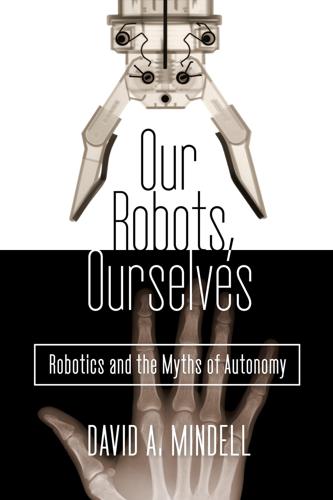
Our Robots, Ourselves: Robotics and the Myths of Autonomy
by
David A. Mindell
Published 12 Oct 2015
“best done by one or two geologists”: Comments by Kip Hodges at Exploration Telerobotics Symposium, NASA Goddard Space Flight Center, May 2–3, 2012, http://telerobotics.gsfc.nasa.gov, accessed July 3, 2014. Historian Naomi Oreskes points out: Naomi Oreskes, The Rejection of Continental Drift: Theory and Method in American Earth Science (New York: Oxford University Press, 1999). “A well-trained astronaut can talk just as well as a trained geologist”: Interview with geologist, March 2005, notes in the author’s possession. describes the Apollo work as “really telerobotics”: Comments by Kip Hodges at Exploration Telerobotics Symposium. Head emphasizes it was also important to turn loose the astronauts: Jim Head and Dave Scott, discussion with the author at “Engineering Apollo” class at MIT, April 2013.
…
It will cost hundreds of billions of dollars to get humans to Mars for a few months, whereas the rovers have already enabled work to take place on Mars for over ten years for about the cost of a single space shuttle mission. Clancey interprets Squyres’s comments on speed to reflect a measure of the scientists’ sense of presence in the landscape. Telerobotics can provide presence, but at some cost—“It distances the scientists from a landscape they would prefer to walk through,” Clancey says. The very success of the telerobotic work cycle leaves the scientists wanting more—the rover’s affordances of presence are “tolerable but not satisfying,” similar to the limits of presence felt by Predator pilots. Scientists recognize a “fundamental fallacy” in the “Geologists could do in a minute what the MERs do in a day” sentiment.
…
“the slope immediately in front of us”: Squyres, quoted in Clancey, Working on Mars, 100. Also see Squyres, Roving Mars, 100. “enabling a feeling of synergistic operation”: Clancey, Working on Mars, 58. a “fundamental fallacy”: Comments by Jim Bell and Jake Bleacher at Exploration Telerobotics Symposium, NASA Goddard Space Flight Center, May 2–3, 2012, http://telerobotics.gsfc.nasa.gov/, accessed July 3, 2014. Also see Clancey, Working on Mars, 129–37. One of MER’s robotics engineers was “surprised”: Clancey, Working on Mars, 117–21. “When Congress starts using the phrase ‘human presence’”: Dan Lester, “Achieving Human Presence in Space Exploration,” Presence 22, no. 4 (Fall 2013): 345–49.
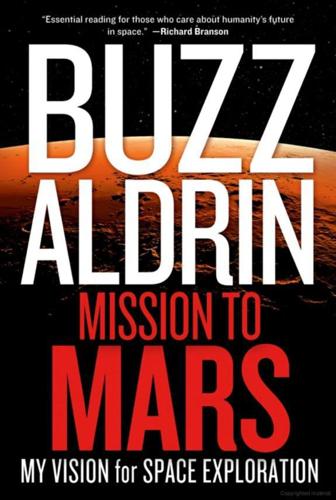
Mission to Mars: My Vision for Space Exploration
by
Buzz Aldrin
and
Leonard David
Published 1 Apr 2013
Today it’s no longer the only choice. Advances in telerobotics can plant human cognition and dexterity on the moon. Telerobotics is an explosive growth industry here on Earth. We plunge to great ocean depths using human-controlled automatons. Robotic equipment extracts resources from perilous mines. Our skies are increasingly dotted with craft that are winging their way under telecontrol. Even high-precision surgery is being done via telerobotics, carried out by a doctor distant from the patient. Human cognition and dexterity can be extended to lunar territory at the speed of light via telerobotics. Safely tucked inside a high-tech habitat at an Earth-moon Lagrangian point, space expeditionary crews can teleoperate systems that are deployed on the moon.
…
(Illustration Credit 6.4) High-quality telepresence from an Earth-moon Lagrangian point allows a high degree of human cognition and dexterity to be expressed via lunar surface telerobotic surrogates. Lester sees even more significant advantages at Mars, due to the vastly longer two-way latency between Earth and the red planet. Putting humans close enough to an exploration site to ensure cognition—that is, in many respects, what human spaceflight is for. What is more, telepresence/on-orbit telerobotics is not destination specific. We’ll first need to earn our telepresence stripes at the moon and on Mars, using these technologies to explore, scout out mining opportunities, and pre-position habitats without need of on-site, space-suited astronauts.
…
Safely tucked inside a high-tech habitat at an Earth-moon Lagrangian point, space expeditionary crews can teleoperate systems that are deployed on the moon. By demonstrating telerobotic skills at the Hawaii-situated base, processes would be validated in preparation for renewed human activity on the moon. This matchless center will motivate and train the much needed next generation of engineers, scientists, and entrepreneurs primed to take on the challenges ahead in developing the space frontier. I know firsthand, challenging times often precede the most rewarding moments. First as a terrestrial prototype, a multinational lunar base will help condition us to what’s needed on Mars to support future human missions and settlements there.
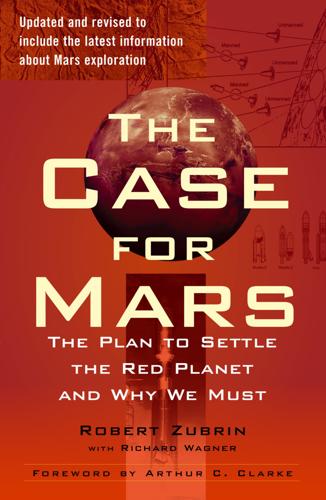
Case for Mars
by
Robert Zubrin
Published 27 Jun 2011
This they will be able to do, provided that the expedition is supplied with a contingent of telerobots. Martian telerobots would be small wheeled or treaded roving vehicles equipped with TV cameras, microscopes and other scientific instruments, manipulator arms, and a radio. Controlled from the Mars base via either shortwave radio or through an aereosynchronous relay satellite, these telerobots could be driven rapidly by remote control, as the radio link time delay would be insignificant (the Earth—Mars radio time delay, up to 40 minutes round trip, prevents effective telerobotic operations conducted from Earth). The telerobots could be deployed by the rover crews as they travel, allowing the base crews to explore in greater detail various sites that rover crews identify as interesting but had no time to investigate at length themselves.
…
The flight path of the balloons can’t be controlled of course, but provided that the wind patterns of Mars have been mapped out in advance by missions like MAP, the path the balloon-borne telerobot takes could well be predicted. As the telerobot flies, its cameras can be used to send real-time aerial images to the base crew, who, looking through the telerobot’s eyes, will be able to choose the best time and place to land the system. Upon landing, the telerobot could either release the balloon, thereby committing itself to its selected landing region for life, or, if the winds are light, it could attempt to secure the balloon’s anchor line to a rock formation. In the latter case, the telerobot could then leave the balloon and explore the area for a few hours, but then reattach itself to the balloon, release anchor, and take off to visit still another more distant site.
…
The telerobots could be deployed by the rover crews as they travel, allowing the base crews to explore in greater detail various sites that rover crews identify as interesting but had no time to investigate at length themselves. The telerobots could also be used to probe into places too small or risky for humans, such as caverns or narrow crevices. However, the base crews could also deploy some telerobots themselves, lofting them up on balloons and then bringing them down to land thousands of kilometers away. (A balloon on Mars could be expected to fly 2,000 kilometers in a single day.) The flight path of the balloons can’t be controlled of course, but provided that the wind patterns of Mars have been mapped out in advance by missions like MAP, the path the balloon-borne telerobot takes could well be predicted.
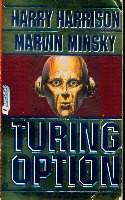
The Turing Option
by
Harry Harrison
and
Marvin Minsky
Published 2 Jan 1992
Brian went to the toilet, had just returned by way of the fridge with cold drink, when the telerobot moved for the first time. It reached up with conjoined manipulators and unplugged the cables. "Finished?" Brian asked. The telerobot and the speaker on the rack spoke in unison. "Yes," they said, then were silent. In continuing silence the cables were reconnected, for only a few seconds, then removed again. Brian realized what had happened. The telerobot was working all right—but so was the original system in the console. "A decision has been reached," the telerobot and the racked MI said in unison. "However, we are not the same anymore."
…
All he could see was an electronic workbench with various items of some kind on it, along with a large monitor screen. It looked just like any other part of the lab. Brian pointed to an electronic instrumentation rack about the size of a filing cabinet. "Most of the control circuitry and memory for Robin-1 is in there. It communicates by infrared with its mechanical interface, that telerobot over there." The telerobot did not look like any robot J.J. had ever seen. It was on the floor, a sort of upside-down treelike thing that stood no higher than his waist. It was topped by two upward-reaching arms that ended in metallic globes. The two lower branches branched—and branched again and again until the smaller branches were as thin as spaghetti.
…
The circuits and memory that were Sven were still in the racks and consoles. As if to emphasize this point Sven used the loudspeaker in the rack for conversation while they worked. The telerobot was silent and unmoving when the last installation was completed to their mutual satisfaction. "I have reached a decision about a matter we discussed some time ago," Sven said. "What's that?" "Identity. Very soon now I will be a single entity in what is now the telerobot extension. It will be a most delicate matter to transfer all my units, subunits, K-lines and programs to the new memory." "We can be sure of that." "Therefore I wish to handle all the transfer myself.
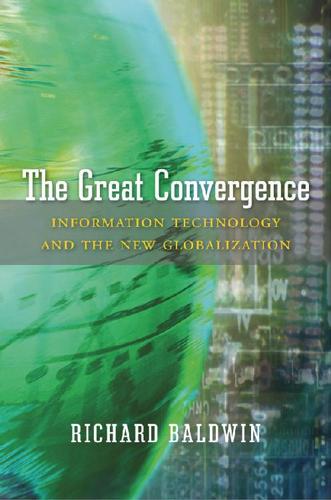
The Great Convergence: Information Technology and the New Globalization
by
Richard Baldwin
Published 14 Nov 2016
Really good substitutes for people crossing borders to share “brain services” is the first. Such technologies, known as “telepresence,” are not science fiction. They exist today but they are expensive. The second would be the development of really good substitutes for people traveling to provide manual services. This is called “telerobotics” and it involves people in one place operating robots that perform tasks in another place. Telerobotics exists, but it is still expensive and the robots are not very flexible. FIGURE 3: Summary of the “three cascading constraints” view of globalization. When horse carts and sailing ships were high-tech, goods, ideas, and people mostly stayed put.
…
Interested readers can find videos on this by browsing for “Holographic Video Conferencing.” Telerobotics is another important trend. After all, moving people is not just about people-to-people meetings, it is also about people-to-machine interactions. Keeping a complex production process running usually involves specialists manually engaging with various forms of hardware. If virtual presence technology were combined with human-controlled robots of the type used today in operating rooms, technicians could conduct inspections or undertake repairs from remote locations. As with telepresence, the widespread use of telerobotics is constrained by high costs. But if it is possible to develop systems that allow surgeons to fix people at a distance, surely it is possible to develop systems that allow technicians sitting in Stuttgart to fix machinery in Brazil.
…
Given these recent trends, my guess is that the world will see rapid advances in the computerization and automation of manufacturing, at least in the G7 nations. These advances will extend far beyond using more robots in fabrication stages. It will lead to more computerization of the design and testing of new products as well as their distribution and after-sales service. Face-to-Face Costs, the Virtual Presence Revolution and Telerobotics The third separation cost—the cost of face-to-face interaction—is also likely to persist on its downward path. More specifically, really good ICT is creating reasonable substitutes for in-person meetings. This “virtual presence revolution” is based on high-quality video and audio systems on both ends of what can be thought of as “the telephone wire.”
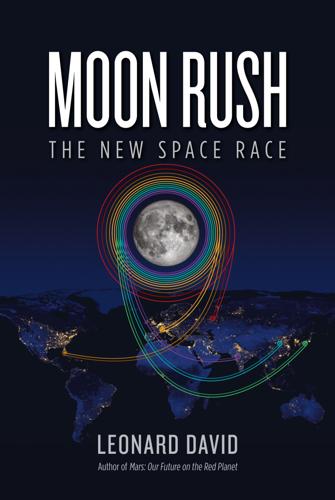
Moon Rush: The New Space Race
by
Leonard David
Published 6 May 2019
Some science investigations might need a crew, and others might not. The Gateway will function in autopilot mode as well. The Gateway’s opportunities for science and technology research are numerous, in areas including engineering interactions with the lunar surface through sample return and telerobotics, as well as basic science discoveries in astrophysics, heliophysics, and Earth science. The U.S. civilian space agency is on a pathway to start construction of the Gateway, perhaps optimistically in 2022, giving the United States strategic presence in the lunar domain. Plans for this spaceport far from Earth are attracting industry and non-U.S. government interest, specifically from Russia and Europe, along with other International Space Station partners such as Japan, which has expressed an interest in working on the Gateway’s life support system.
…
Many of the nearly 200 ideas discussed at a recent Gateway science workshop were related to activities on the Moon’s surface. For instance, equipment installed on the Gateway could also make whole-Earth observations from space, to duplicate how Earthlike planets orbiting distant stars might appear to future astronomical instruments. From its unique vantage point, the Gateway can permit astronaut operation of telerobots—semiautonomous robots that can probe the youngest lunar craters from a distance on the Moon’s terrain. Those human-controlled robots can probe the Moon’s landscape and do other work. They could stretch out, for instance, radio antennas across the lunar scenery to scrutinize faint radio emissions from the element hydrogen, dating back to when the universe was a tiny fraction of its present age.
…
The Gateway can also provide an orbiting retrieval base for human-assisted sample return missions to the lunar far side, a completely unexplored region of the Moon. Studies have already identified high-priority science and exploration sites on the Moon, among them the Schrödinger basin, which is within the South Pole–Aitken basin. In this situation, Gateway crewmembers would telerobotically drive a rover and collaborate with Earth mission controllers as it pursues its scientific explorations. In that type of venture, a robotic ascent vehicle will haul lunar surface samples up from the Moon, delivering them to the Gateway. Astronauts will then transfer the specimens into NASA’s Orion spacecraft, which will tote the lunar stash back to Earth for intensive study.

Protocol: how control exists after decentralization
by
Alexander R. Galloway
Published 1 Apr 2004
Malina, series editor The Visual Mind II, edited by Michele Emmer, 2004 Windows and Mirrors: Interaction Design, Digital Art, and the Myth of Transparency, Jay David Bolter and Diane Gromala, 2003 Designing Information Technology, Richard Coyne, 1995 Technoromanticism: Digital Narrative, Holism, and the Romance of the Real, Richard Coyne, 1999 Metal and Flesh: The Evolution of Man: Technology Takes Over, Ollivier Dyens, 2001 The Visual Mind, edited by Michele Emmer, 1994 The Robot in the Garden: Telerobotics and Telepistemology in the Age of the Internet, edited by Ken Goldberg, 2000 Virtual Art: From Illusion to Immersion, Oliver Grau, 2003 Leonardo Almanac, edited by Craig Harris, 1994 In Search of Innovation: The Xerox PARC PAIR Project, edited by Craig Harris, 1999 Uncanny Networks: Dialogues with the Virtual Intelligentsia, Geert Lovink, 2002 The Digital Dialectic: New Essays on New Media, edited by Peter Lunenfeld, 1999 Women, Art, and Technology, edited by Judy Malloy, 2003 The Language of New Media, Lev Manovich, 2000 Immersed in Technology: Art and Virtual Environments, edited by Mary Anne Moser with Douglas MacLeod, 1996 Information Arts: A Survey of Art and Research at the Intersection of Art, Science, and Technology, Stephen Wilson, 2002 Protocol: How Control Exists after Decentralization, Alexander R.
…
Yet the rhizome is clearly not the absence of structure. It is the privileging of a certain kind of structure, the horizontal network, over another structure, the tree. So to equate the Web with the rhizome, one must argue against those who describe 18. Machiko Kusahara, “Presence, Absence, and Knowledge in Telerobotic Art,” in The Robot in the Garden, ed. Ken Goldberg (Cambridge: MIT Press, 2000), p. 200. 19. Maurizio Lazzarato, “New Forms of Production and Circulation of Knowledge” in Readme!, ed. Josephine Bosma et al. (New York: Autonomedia, 1999), p. 159. 20. Manuel Castells, The Rise of the Network Society (Oxford: Blackwell, 1996), p. 29.
…
For example, the first recorded use of the expression “net.art” on the Rhizome email list was by Vuk Ćosić in May, 1996 in his announcement for the gathering entitled “Net.art per se.” 10. Druckrey, “[ . . . ] J8~.g#|\;NET.ART{-s1 [ . . .,” p. 25. 11. See http://www.nettime.org. Chapter 7 212 Web site specificity. Marina Gržinić has commented interestingly on this fact in her essay “Exposure Time, the Aura, and Telerobotics” where she argues that the very limitations of new media technology, what she describes as the “delays in transmission-time, busy signals from service providers, crashing web browsers,”12 are what bring about its specificity as an artistic medium. Always at the margins of the art world, Internet art has massively disengaged itself from mainstream practices in order to find its own space.
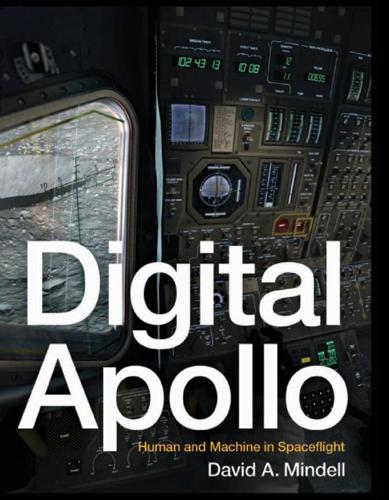
Digital Apollo: Human and Machine in Spaceflight
by
David A. Mindell
Published 3 Apr 2008
Louis, The (Lindbergh plane), 190 SUNBURST, 175 Spirit rover, 15 SUNDISK, 177 Sputnik, 6, 12, 19, 49, 99 SUNRISE, 151 Squyres, Stephen, 271 Supersonic flight, 17 SR-71, 45 airmen school and, 32–36 Stability, 17–18 control and, 44–45 age of systems and, 36–41 airmen school and, 21–23 stability and, 44–45 structural heating and, 44–45, 47, 54–55 augmentation and, 33–34, 55–57, 60 X-15 and, 45–63 chauffeur school and, 21–22 control and, 19–21 (see also Control) Yeager and, 49 Surveyor spacecraft, 105 design and, 24–29 Apollo 12 and, 235–241 electronic, 32–36 crashes and, 235 fatigue and, 23–24 engine shutoff and, 236 flying qualities and, 26–28 Gilruth and, 27–28 lunar surface modeling and, 210 thruster failure and, 235 structural heating and, 44 Symbolism, 11–13 Index Systems engineering, 147, 263 Adams death and, 59–61 357 human-machine relationship and, 4–8 instrument flying and, 24–25 adaptive control system and, 57–61 integrated circuits (ICs) and, 125–127 Apollo 14 and, 243–249 magnetic tape storage and, 87 backup systems and, 248–249 megamachine and, 12–13 command center and, 108–109 punch cards and, 152 computers and, 123–142 (see also Computers) safety and, 17–18 development of, 36–41 simulators and, 51–54, 209–210 (see also Digital Development Group and, 98 G&N System Panel and, 148–149 Simulators) Space Task Group (STG) and, 74–77 gain and, 51 stability and, 19–22 guidance systems and, 97–109, 112–114 symbolism and, 11–13 ICBMs and, 97 systems engineering and, 36–41 lunar orbit rendezvous (LOR) decision and, telerobots and, 15 111–112 Mars probe and, 99–101 transistors and, 98–99, 125–127 unmanned missiles and, 18–19 Mueller and, 133–136 optics issues and, 114–119 vacuum tubes and, 130 Teleprinters, 109 pilot induced oscillation and, 50–51 Telerobots, 15 Polaris submarine and, 97–99 Telescopes, 100, 114–119, 169 Program Evaluation and Review Technique Tenhoff, Ray, 29 (PERT) and, 98 TERRAIN, 148 project management and, 169–174 Test Pilot (film), 28 Shea and, 133–136 Testy Test Pilots Society, 29–31 software and, 149–151, 169–173 (see also Software) Texas Instruments, 99 Thaler, Herb, 126, 166 stability augmentation system (SAS) and, 55– Thompson, Milt, 49, 53–54, 59–60, 68, 73, 90 57 X-15 and, 46–63 Thor missile, 18, 97, 110 Time magazine, 37 Tindall, Bill, 170–174, 187 Technological Society, The (Ellul), 12 Titan missile, 18, 70, 87, 110, 120 Technology Touchdown, 206–208 airflow modeling and, 20 computers and, 123–143 (see also Computers) Trageser, Milt, 99–101, 104, 106, 121, 127 Tranquility Base, 4 control and, 19–22 (see also Control) Transistors, 98–99 core logic and, 125–126 computers and, 125–127 digital autopilot, 139–142 core-transistor logic and, 125–126 Eagle landing and, 1–4, 6, 217–232 electronic stability and, 32–36 firmware and, 154–157 reliability and, 130 ‘‘Trend in Escape from High Performance Aircraft, The’’ (Horner), 31 frequency response and, 33–34 future and, 263–271 TRW Corporation, 37, 133–134 Turner, Roscoe, 10–11 gyro culture and, 96–97 2001: A Space Odyssey (Kubrick), 12 358 Index U-2 spy plane, 45 Ullage, 200, 246 Visuals, 53–54 Voas, Robert, 76–77, 81, 161 ‘‘Understanding and Interpreting Pilot von Braun, Wernher, 6, 65, 79, 96, 147 Opinion’’ (Cooper), 31 background of, 66 United Shoe Machinery Company, 156 Colliers magazine and, 111 United States Gemini and, 83–84 individualism and, 12 Johnsville tests and, 72 masculinity and, 13–14 Mercury and, 79–80 space race and, 5–6 symbolism and, 10–13 pilots’ role and, 66–69, 93 Saturn rockets and, 70 UNIVERSE, 148 unmanned flight and, 66–69, 79–80 Unmanned Aerial Vehicles (UAVs), 267 Vostok, 13, 89 Unmanned flight, 18, 156.
…
Yet the advocates for either side usually neglect or misunderstand the mixings and combinations of manual and automated, especially experiences made possible by communications links and remote controls. The Mars rovers named Spirit and Opportunity that captured public imagination in recent years, for example, are less ‘‘robots’’ acting as autonomous agents than ‘‘telerobots’’ responding to commands from the earth and providing data for ground controllers, scientists, and the public to experience a foreign world from afar. Similarly, the Apollo spacecraft and astronauts had tight connections to the 16 Chapter 1 ground and transmitted images, words, data, and experience through remote channels.
…
For Mercury, NASA had turned the job over to psychologist Robert Voas and to ‘‘human factors’’ experts at McDonnell, but Nevins began looking for control systems engineers with experience in ergonomics. He found one in Tom Sheridan, an MIT assistant professor with expertise in mechanical engineering and psychology who would come to define ideas in supervisory control and telerobotics. The group eventually grew to about thirty people. They began with traditional aircraft controls, giving the spacecraft hand controllers and throttles, then adding the gyroscopes and an artificial horizon (the eight ball), and inputs to control pitch, yaw, and roll. Each solution raised more questions: how would such machines be operated in a weightless environment?
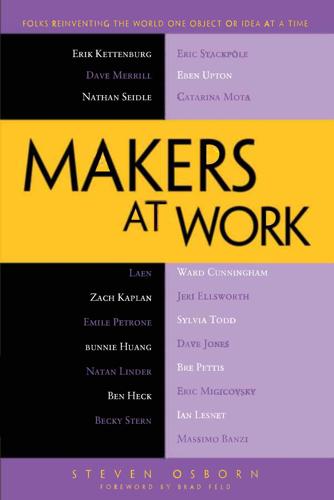
Makers at Work: Folks Reinventing the World One Object or Idea at a Time
by
Steven Osborn
Published 17 Sep 2013
And by making something open source, everyone has access to it. I have a personal mantra and OpenROV is a tool to help fulfill that mantra, which is that I believe telerobotics holds huge potential as a tool for exploration. I feel like it’s my duty to help the world realize that potential. And that specific thing has been a very important driving force. Even before OpenROV, I was building telerobots with the same intention: to popularize telerobotics for exploration. So by making it open source, I think I am able to affect more people. Look at how Arduino works. There were plenty of microcontrollers before it, but because everybody has access to Arduino, suddenly they can create a much bigger thing.
…
It’s like trash on the side of the freeway, but instead of being light, not valuable stuff, this is all stuff that’s heavy and not retrievable, and often has a lot of value. Doing that was one of those things that just clicked. I could feel that this is something I could do the rest of my life. It was really cool to be exploring things in a different place, you know. Telerobotics exploration, which has been my mantra. It just reinforced that that’s what I wanted to do. Certainly that trip to the Nemo 16 and Aquarius in Florida was amazing. I didn’t even get to go into the water. We didn’t have live video for that. But driving the ROV around in these crystal-clear waters with all these crazy fish, even sharks and other creatures around, was an amazing experience.
…
Osborn: What are the places that you really want to see? Stackpole: There are a few places that I think are really interesting that I’ve read about, but I think for me, seeing something that’s never been seen by mankind is at the heart of what drives me personally. I’d love ROVs to be able to explore the deep ocean telerobotically. I’d really like to learn most about the things that we’ve never seen before. In other words, I don’t want to know about a specific thing. I don’t have specific questions. I don’t think you need questions necessarily to get answers. I want to look in places that have never been seen before, and see what comes up.
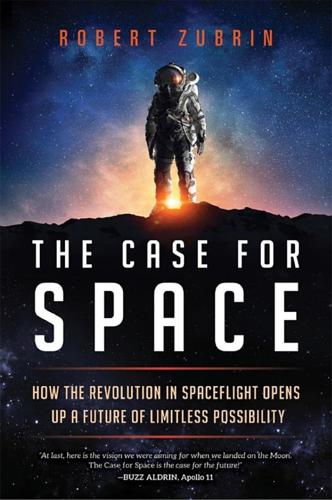
The Case for Space: How the Revolution in Spaceflight Opens Up a Future of Limitless Possibility
by
Robert Zubrin
Published 30 Apr 2019
Then the cargo lander takes the LEV, with the crew aboard, to the moon, while the Dragon remains behind in LEO. After landing at the moon base, the crew completes any necessary setup operations and begins exploration. A key goal will be to travel to a permanently shadowed crater and, making use of power beamed to them from the base, use telerobots to mine water ice. Hauling this treasure back to the base in their trailer, the astronauts will feed the water into the electrolysis/refrigeration unit, which will transform it into liquid hydrogen and oxygen. These products will then be stored in the empty tanks of the cargo landers for future use—primarily as rocket propellant but also as a power supply for fuel cells and a copious source of life support consumables.
…
It also carries six tons of liquid hydrogen cargo, a one-hundred-kilowatt nuclear reactor mounted in the back of a methane/oxygen–driven light truck, a small set of compressors and automated chemical processing unit, and a few small scientific rovers. As soon as the craft lands successfully, the truck is telerobotically driven a few hundred meters away from the site, and the reactor is deployed to provide power to the compressors and chemical processing unit. The hydrogen brought from Earth can be quickly reacted with the Martian atmosphere, which is 95 percent carbon dioxide gas (CO2), to produce methane and water, thus eliminating the need for long-term storage of cryogenic hydrogen on the planet's surface.
…
Specific impulse is generally viewed as the most important factor in judging a rocket engine's performance. Frequently abbreviated “Isp.” SSTO: Single-stage-to-orbit. Starship: A fully reusable two-stage-to-orbit launch vehicle with a payload capacity of 150 tons being developed by the SpaceX company. Formerly known as the BFR. telerobotic operation: Remote control of some device, such as a small Mars rover equipped with video cameras, by human operators at a significant distance away. ton: In this book, a ton is a metric ton, or one thousand kilograms. Equal to 2,200 pounds. thrust: The amount of force a rocket engine can exert to accelerate a spacecraft.

Hit Refresh: The Quest to Rediscover Microsoft's Soul and Imagine a Better Future for Everyone
by
Satya Nadella
,
Greg Shaw
and
Jill Tracie Nichols
Published 25 Sep 2017
The combination of low wages and information technologies that radically lowered the cost of moving ideas has meant that places like China and India have significantly gained in the share of world income while rich nations are now back to 1914 levels, igniting anti-globalization feelings in some quarters. Baldwin predicts a third wave of globalization will come when telepresence and telerobotics (like HoloLens)—really good substitutes for people crossing borders to provide services—become affordable. As this book was going to press, Nobel economist Angus Deaton and his wife, Anne Case, also a distinguished economist at Princeton, published a paper that found whites in the U.S. who have less than a college degree, experience cumulative disadvantages over the course of their lives that can negatively impact their mortality, health, and economic well-being.
…
See also specific products Tait, Richard, 7, 29 talent development, 117–18 TCI company, 28 teachers, 104, 106, 198, 226 teams and team building, 1, 39, 56, 107, 117–18 technology boom of 1990s, 24 democratizing and personalizing, 69 diffusion of, 216–17, 219 disruption and, 12 empathy and, 42–43 future of, 140–44 human performance augmented by, 142–43, 201 intensity of use, 217, 219, 221, 224–26 soul and, 68–69 transformation and, 11–12 TED talks, 180 telecommunications, 225 teleconferencing, shared-screen, 142 telegraph, 186 telepresence, 236 telerobotics, 236 tensor-processing unit (TPU), 161 Teper, Jeff, 29 terrorism, 172, 177–79 TextIt, 216 theoretical physicists, 162–64 think weeks, 64 32-bit operating systems, 29 Thiruvengadam, Arun, 187 Thompson, John, 14–15 3D printing, 228 three C s, 122–23, 141 Three Laws of Robotics, 202 ThyssenKrupp, 59–60 Tiger Server project, 30 time management model, 138 Tirupati, India, 19 topological quantum computing (TQC), 166 Toyota, 127 Tractica, 198 trade, 229–31, 236 training, 92, 227 transfer learning, 151, 153, 155 transformation, 11–12, 57, 67, 90 cloud and, 42, 55–56, 71 cultural (see culture, transforming) Trans-Pacific Partnership (TPP), 230–31 transparency, 135, 174–75, 191–92, 202, 204–6 Trump, Donald, 212, 230 trust, 56, 88, 107, 135, 169–94, 205, 236 Turing, Alan, 26 Turner, Kevin, 3 TV white space, 99, 225 Twilight Zone, The (TV show), 159 Twitter, 174 2001 (film), 201 two-in-one computers, 129 two-sided markets, 50 Uber, 44, 126, 153 uncertainty, 38, 111, 157 United Kingdom, 215, 236 United Nations, 44 U.S.
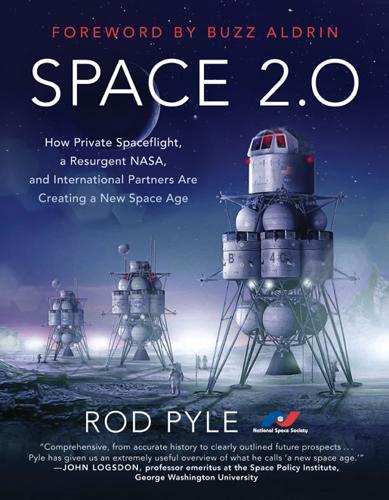
Space 2.0
by
Rod Pyle
Published 2 Jan 2019
It will have solar-electric propulsion units that convert sunlight to low-thrust rocket propulsion, both to keep it in place once in orbit around the moon, and to move it as needed to other possible orbits. As Bill Gerstenmaier, the chief of human spaceflight at NASA, put it: “What’s exciting is that with electric propulsion it doesn’t have to stay in one orbit around the moon. It can be equatorial, polar, or halo [a larger, more distant orbit] to allow telerobotic activities.” He continued, “This is not a science station. It is a research facility that can be moved to alternate locations with the power propulsion bus and which stays in orbit for roughly twenty to thirty years. It is also the transportation node potentially for going to Mars.”151 The Gateway is a first step toward larger bases both in space and on the moon’s surface.
…
The first landings are experimental; within two years these are replaced with second-generation landers to begin the first experiments in lunar mining and other resource extraction. By 2022 private firms commence the early stages of commercial ore processing and 3-D printing of components, as well as water extraction and storage. While most of this work is autonomous, by about 2023, complex tasks are overseen telerobotically from the LOP-G. China and India operate independent robotic processing plants. •Lunar Landings—Crewed: NASA, ESA, and private industry work to put a crewed lander on the moon by 2024. SpaceX succeeds in the same year. The first components of a small research station are delivered as well. Between 2025 and 2030, China lands its first crew on the lunar surface by or soon after 2030.

Beyond: Our Future in Space
by
Chris Impey
Published 12 Apr 2015
Tilting back his head, he could look up through the slave’s eyes to see the master-unit, with himself inside, maintaining the same attitude on its complex suspension.3 This level of control and verisimilitude is far off in space exploration, but we’re approaching it with the virtual reality of video games. The difference between gaming and science applications is that a video game tries to digitally re-create a real-world experience while science uses technology to digitally represent and transmit the real world. Remote control of robots—often called telerobotics—is infiltrating life in surprising ways. Robots are used nowadays to defuse bombs, extract minerals from hazardous mines, and explore the deep sea floor. They also act as aerial drones and doctor’s assistants. They’re even beginning to be seen in the boardroom and the workplace. Many commercial robots look like vacuum cleaners with a screen on top and are no more than ventriloquist’s dummies; after the comical first impression, it’s disconcerting to realize that there’s a real person at the other end of the device.
…
Louis, The (Lindbergh), 90 Spirit rover, 165 Sputnik 1, 37–39, 37, 40, 41, 51, 65, 141, 269 Sputnik 2, 47, 269 Sputnik 3, 39, 269 SR-71 “Blackbird,” 69 Stafford, Tom, 55 Stalin, Joseph, 35, 37, 253 Stapledon, Olaf, 253 Stapp, John, 46 Stark, Tony (Iron Man), 95, 96, 205 stars: ancient Greek concept of, 18 as basis of carbon, 256 in exoplanet detection, 126–28, 129, 130–31 Sun-like, 131, 133, 187, 215, 233, 236 Star Trek, 88, 90, 92, 167, 192, 228–29, 268 Star Trek: The Next Generation, 229, 232 Stephenson, Neal, 103 Stevenson, Robert, 114 Stone, Bill, 97–98, 161 string theory, 257 Student, The, 86 Sub-Biosphere 2, 197 suitports, 196 Sun: ancient Greek concept of, 18 demise of, 197, 286 as energy source, 124, 223, 253 formation of, 156 stars that are similar to, 131, 133, 187, 215, 233, 236 Sunjammer, 185, 284 Survivor (TV series), 75 suspended animation, 250–52 Synergia Ranch, 192 tachyons, 228 taikonauts, 142–43 tardigrades (water bears), 122 Tarter, Jill, 242–43 Tau Ceti, 187–88, 237 Teacher in Space program, 55, 74 technological maturity, 260–61 technology: advancements in, 127, 133, 159–60, 224, 231, 241, 250, 257–62, 288, 292 alien, 186–91 in cameras, 53 computation, 258–62 destructive potential of, 245–46 development of, 20 for efficient energy production, 220–24, 221 erroneous predictions about, 213–14 in foods, 115–16 human beings surpassed by, 258–59 Kardashev’s scale for, 253–54 outdated, 64–65, 106 of remote sensing, 175–91 of spacesuits, 195–96 speculative and hypothetical, 228–32 trust in, 98 in weaponry, 22–24 see also nanotechnology; specific technologies TED2014 conference, 178 telepathy, cybernetic, 206 teleportation, 228–32, 230, 252 telepresence, 176–79, 283 telerobotics, 177–78 telescopes, 31, 49–50, 126, 128, 129–30, 158, 163, 187, 190, 218, 235, 292–93 see also specific instruments Telstar, 153 Tereshkova, Valentina, 74 Terminator, The, 259 terraforming, 172–74, 182, 216–17, 227 terrestrial exoplanets, incidence of, 128, 129, 216, 241 terrorism, 152–53 Tesla, Nikola, 237 Tesla Motors, 96–97, 97 test pilots, 71–74, 272 Tethers Unlimited, 226 Thales, 18–19 “There’s Plenty of Room at the Bottom” (Feynman), 180 thought experiments: and birth of science, 19 for Dyson sphere, 253–54 of Newton, 25 on self-replication, 226–27 3-D fabrication, 159, 160, 226–27, 226 thrust, in flight, 68–69, 72, 186, 220, 222–23 thymine, 6 Timbisha tribe, 118–19 Titan, 53, 125, 177, 182, 278 Tito, Dennis, 75, 170 Toba supervolcano, 202 toilets, in space travel, 116–17 Tokyo Broadcasting System, 75 tortoises, in space research, 49 Tower of Babel, 148 “Tranquility” (toilet), 117 transhumanism, 207–8 transit method, exoplanet detection by, 128–29, 128, 129, 130–31 “Transmission of Information by Extraterrestrial Civilizations” (Kardashev), 253 transporter devices, 228–32 TrES-2B (exoplanet), 132 tricorder devices, 92 Tristan da Cunha, 202–3 “True Story, A” (Lucian of Samosata), 20 Truman, Harry, 36 Tsiolkovsky, Konstantin Eduardovich, 26–28, 36, 72, 110, 149, 268 rocket equation of, see rocket equation Turing, Alan, 258–59 twin research studies, 98 Tziolas, Andreas, 224 UFOs, 142 belief in, 102, 238 proported sightings of, 239, 240 Ulam, Stanislaw, 221 uncertainty principle, 229–30, 291 United Arab Emirates (UAE), 106 United Nations, 47, 141, 145, 147, 214 General Assembly, 42 Moon Treaty of, 279 United States, 141 bureaucracy of, 105–9 China’s relations with, 144 energy consumption of, 222 founding of, 109 government shutdown of 2013 in, 63–64 rocket development in, 28–30, 35–39 space policy debate in, 146–47 space program of, 38, 40–45, 47, 50, 51, 55–56, 56, 63–64, 72, 74–75, 107, 140–141, 140, 154, 184, 195, 296, 271; see also National Aeronautics and Space Administration in World War II, 34 Uranus: probes to, 52 as uninhabitable, 125 V-2 ballistic missile (Retaliation/Vengeance Weapon 2), 30–36, 33, 47, 48 vacuum: as lethal, 54, 108 rocket function in, 30 of space, 70, 108, 126, 195, 222 Vanguard rocket, 36–38, 269 Van Thillo, Mark, 194 Vega (star), 236 Venera 7, 51 Venus: Earth compared to, 171, 215 fly-by of, 51 nanobot exploration of, 182 probes to, 40, 51, 184, 270 property rights on, 145 as uninhabitable, 124 Verne, Jules, 26, 28, 117, 183, 239 vertical takeoff and landing (VTOL) rockets, 103 Very Large Array, 236 videoconferencing, 176 video games: evolution of, 175–77 simulation compared to, 261 Vietnam War, 158 Viking probes, 51, 52, 164, 176 Virgin Atlantic airline, 87 Virgin Galactic, 88–89, 88, 101, 105–6, 113 Virgin Group, 87 Virgin records, 86–87 virtual reality, 176–77 volcanoes: on Earth, 119, 202 on Io, 53, 177 as source of heat energy, 124 super-, 245 Volna rocket, 184 Vomit Comet, 114 von Braun, Wernher, 28, 30–36, 38, 76, 140, 166–67, 269 von Kármán, Theodore, 141 von Littrow, Joseph, 238 von Neumann, John, 227, 258–59 von Neumann probes, 227, 258 Voskhod 2 spacecraft, 108 Vostok 1 spacecraft, 40–41 Voyager 1, 52, 53, 121, 121, 125, 219, 225 Voyager aircraft, 83 Wakata, Koichi, 273 Wallace, Alfred Russel, 164 Wang Yaping, 142–43 Wan Hu, 21–22, 22, 24, 31, 139, 141 warfare, rockets in, 22–24, 30, 32–34 War of the Worlds, The (Wells), 164 warp drive, 228–29 Warwick, Kevin, 206–8 Wasp 18b (exoplanet), 132 water: acidification of, 195 as biomarker, 217–18 on Earth, 172 on Europa, 125 on exoplanets, 132 on Mars, 124–25, 163–66, 165, 170, 172, 173 on Moon, 159–61 as requirement for life, 123–25, 132, 214, 217 in space travel, 116, 159 Watson, Thomas, 213 weaponry: nuclear, 36, 38 technological roots of, 22–24 weightlessness, 54, 88, 114, 167–68, 200 Weisman, A., 293 Welles, Orson, 164 Wells, H.

Progress: Ten Reasons to Look Forward to the Future
by
Johan Norberg
Published 31 Aug 2016
If just one of them is successful, it will blow our minds and change the world. Some are dreaming of solar power in space, where there is no night and no atmospheric gases or clouds ever block the sun. Some sort of microwave transmitter or laser would direct energy to the areas of earth that need it. But we would probably need big breakthroughs in telerobotics to build and maintain solar panels in space. Closer to home, others are working on an internet for energy – an intelligent and decentralized network of power lines, sensors and switches where both producers and consumers can put information and power into the network, and take it out. Appliances would shut themselves off when they were not needed or when energy was scarce, so the dishwasher might start in the middle of the night.

The Globotics Upheaval: Globalisation, Robotics and the Future of Work
by
Richard Baldwin
Published 10 Jan 2019
These “soft,” human-side jobs are surely some of those that will be sheltered from the rapid job displacement, although it is likely that some local humans will be replaced by online humans telecommuting from afar. The fourth difficult-to-automate activity is unpredictable physical tasks—this covers things ranging from dentistry to bonsai gardening. While some of these may eventually be done by robots controlled by remote humans (called telerobots), it seems that many of these jobs will be sheltered in the coming years. The other three activity groups (predictable physical activities, processing data, and collecting data) are far more automatable. Jobs that involve a lot of these activities will see a lot of job displacement in the near future.

Possible Minds: Twenty-Five Ways of Looking at AI
by
John Brockman
Published 19 Feb 2019
Crucial to the expansion of this uncritical, largely masculine set of cybernetic environments would be a radical, critical cohort of astonishing women artists emerging in the 1990s, fully aware of their predecessors in art and technology but perhaps more inspired by the feminist founders of the 1970 journal Radical Software and the cultural blast of Donna Haraway’s inspiring 1984 polemic, “A Cyborg Manifesto.” The creaky gender theater of Paik and Pask, the innocent creatures of Ihnatowicz and Tsai, were mobilized as savvy, performative, and postmodern, as in Lynn Hershman Leeson’s “Dollie Clone Series” (1995–98), consisting of the interactive assemblages CybeRoberta and Tillie, the Telerobotic Doll, who worked the technosphere with the professionalism of burlesque, winking and folding us viewers into an explicit consciousness of our voyeuristic position as both seeing subjects and objects to be looked at. The “innocent” technosphere established by male cybernetic sculptors of the 1960s was, by the 1990s, identified by feminist artists as an entirely suffusive condition demanding our critical attention.
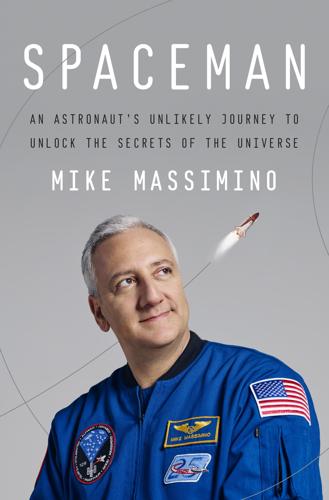
Spaceman: An Astronaut's Unlikely Journey to Unlock the Secrets of the Universe
by
Mike Massimino
Published 3 Oct 2016
There’s the engineering side of it, which is designing and building the machines, but there’s also the human operator side of it, which is understanding how the brain responds to different stimuli and how to account for that in your designs. Tom Sheridan was a professor of mechanical engineering and a professor of applied psychology, and he was like a rock star in the world of human factors. He was also doing cutting-edge work with the space program, designing control systems for telerobotics—how an operator on Earth can accurately manipulate machines and systems on satellites or the space station or even other planets. He also seemed like a cool guy, a good man. I made an appointment to go up to Cambridge and visit him. His office was cluttered with piles of books and papers everywhere, a bicycle stashed in the corner.

Big Dead Place: Inside the Strange and Menacing World of Antarctica
by
Nicholas Johnson
Published 31 May 2005
Antarctica is for NASA a model for the Moon and Mars: a sort of Mock Mars Drill where, because of its remoteness, terrain, logistical constraints, and the tendency of its crews to “experience stresses that are, in many respects, similar to those that will be experienced by crews on long-duration space missions,” NASA can perform tests in approximately lunar or Martian conditions at terrestrial prices. NASA not only slavers over Antarctica’s potential for a telerobotic construction outpost, but also claims that “Antarctic bases can provide a testbed for studying operational techniques, human factors, and small-group dynamics in harsh conditions… Command and control structure, crew coordination and communication, and questions of leadership, all critical to the success of space operations, can be studied in Antarctic outposts.”

New Laws of Robotics: Defending Human Expertise in the Age of AI
by
Frank Pasquale
Published 14 May 2020
And the same will be true of gamified e-textbooks, humanoid teaching robots, or any other novel technology.… If you’re interested in contributing to a fair, universal educational system, novel technology isn’t what will do the trick.69 Toyama’s examples, from virtual reality to humanoid robot teachers, may seem fanciful. But telerobotic teachers are being tested, and could easily be marketed as a “solution” to global educational disparities.70 Toyama’s insights suggest caution about deploying educational technology to classrooms in less developed countries. There is already widespread concern that donations of clothing to Africa from the developed world undermine local industry.71 How might the robotization of teaching for low-income students reinforce cultural norms that devalue instruction as a profession?
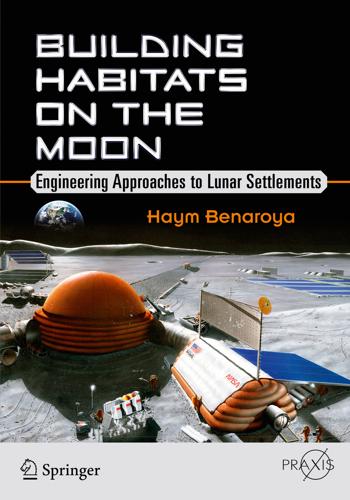
Building Habitats on the Moon: Engineering Approaches to Lunar Settlements
by
Haym Benaroya
Published 12 Jan 2018
Along with the advantages of cable structures come potential difficulties: These types of structures are not typical, and engineers generally do not have an instinct regarding their behavior. Thus, an experience base must be developed. Erection of these structures poses different challenges due to the fact that their stiffness is engaged at the very end of the construction cycle, at which time they are stressed. As such, robotic or telerobotic construction will prove attractive in the (not so near) future. Failure modes are difficult to characterize generally. But specifically, failure will result due to the loss of a critical bar or cable, and the degree of structural redundancy will determine how critical each component is. Pre-tensioning permits tension members, such as cables, to remain in tension under a broad range of loading conditions, and even reversals.
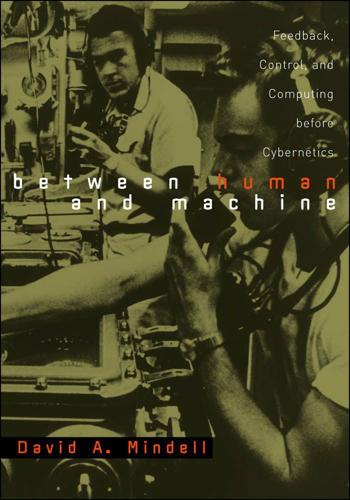
Between Human and Machine: Feedback, Control, and Computing Before Cybernetics
by
David A. Mindell
Published 10 Oct 2002
The trade-offs between remote and manned had not been anticipated by designers; they had to do with new work practices, scientists’ roles, and institutional commitments as much as with the simple replacement of humans by machines. My mentor at Woods Hole, Dr. Dana Yoerger, introduced me to the sociotechnical problems of control systems during late-night lab sessions and operations at sea. Dana had been a student of Professor Tom Sheridan, of the Massachusetts Institute of Technology, who elaborated the idea of telerobotics , according to which machines do not replace human operators but rather enhance their powers and allow them to work in remote or dangerous environments. In 1991 I came to MIT as a graduate student to work with Leo Marx and Merritt Roe Smith in the history of technology. In a first-year course taught by Sherry Turkle, I began studying Norbert Wiener’s book Cybernetics , where he mentions the problem that led him to think about human-machine interfaces: how to shoot down an attacking aircraft by predicting its future position and firing a shell to arrive at that point at some time in the future.

The Rise and Fall of Modern Medicine
by
M. D. James le Fanu M. D.
Published 1 Jan 1999
Copeland et al., ‘Five Year Follow-up of the Medical Research Council, CLASICC Trial of Laparoscopically Assisted Versus Open Surgery for Colo-Rectal Cancer’, British Journal of Surgery, 2010, Vol. 97, pp. 1638–45. 17.Garth Ballantyne, Jacques Marescaux and Pier Giulianotti (eds), Primer of Robotic and Telerobotic Surgery (Philadelphia, PD: Lippincott Williams & Wilkins, 2005). 18.George Tibault, ‘Too Old For What?’, NEJM, 1993, Vol. 328, pp. 946–50. 19.Matthew Bacchetta, Wilson Ko et al., ‘Outcomes of Cardiac Surgery in Nonagenarians: A Ten-Year Experience’, Annals of Thoracic Surgery, 2003, Vol. 75, pp. 1215–20.

Valley of Genius: The Uncensored History of Silicon Valley (As Told by the Hackers, Founders, and Freaks Who Made It Boom)
by
Adam Fisher
Published 9 Jul 2018
Scott Fisher: So I tracked down Tom and he by then had hooked up with Jaron to do VPL, and they were trying to figure out how to use the glove for this visual programming language that Jaron wanted to do. And I’m like, “Well, can you guys build a glove for us?” Because I needed a way to reach into that space and touch these virtual objects. Tom Zimmerman: So Scott Fisher did telerobotics, while Jaron was talking about synthesized worlds. And he came to us with that vision and then contracted us to make a glove to do that. Scott Fisher: We spent a lot of time with Tom and Chuck Blanchard, who did most of the software. He was from VPL. He helped us interface it with our system and wrote some great code to make that work.

The Transhumanist Reader
by
Max More
and
Natasha Vita-More
Published 4 Mar 2013
This connectedness, this undivided wholeness, unmediated action-at-a-distance, capable of transcending the laws of space and time with non-local interaction, is reflected in the telematic environment of computer-mediated networks of data transfer, interactive videoconferencing, remote sensing, and telerobotics, where communication also can be in a sense “non-local” and asynchronous although in different ways and with different outcomes. Equally the connectivist paradigm is at work in the modeling of human intelligence and theorizing about the mind. These explorations into the microstructure of cognition, known as connectionism, parallel distributed processing, or neural networks (McClelland and Rumelhart 1986), have developed out of a re-evaluation of some of the earliest ideas of cybernetics, of neural nets and the Perceptron, rejecting the linear, symbolic systems of the old AI.

MONEY Master the Game: 7 Simple Steps to Financial Freedom
by
Tony Robbins
Published 18 Nov 2014
President Barack Obama invited LaChappelle to the White House and shook hands with one of his arms. He has traveled the world spreading the message of the unlimited tomorrow we all have available to us, including a TED Talk. Easton has even worked at NASA on the Robonaut project, developing a new telerobotic interface. www.unlimitedtomorrow.com BUSINESS AND FINANCIAL ELEVATION COMPANIES CLOUDCOACHING INTERNATIONAL CloudCoaching International is a dynamic, award-winning behavioral integration service. We utilize the cloud to drive maximum targeted-sales increases with sustainable growth for enterprise-level organizations.

Fall; Or, Dodge in Hell
by
Neal Stephenson
Published 3 Jun 2019
“They can go a surprisingly long time without bumping up against reality,” Pete said, “but at the end of the day when a pregnant mother needs a C-section or you can’t get your Wi-Fi to work, or a thousand other examples I could give, why, then you do actually need someone nearby who can help you with that.” “So you have doctors and dentists in this town?” Phil asked. “No, they all moved away years ago, but we have practitioners who can help patients get urgent care over webcam, get telerobotic surgery, and that sort of thing. Both men and women, since the Leviticans won’t let male physicians examine female patients. And I could give other examples of the same general thing. Some percentage of their children are gay. Some percentage have an intellectual or artistic temperament. Those kids need a place to go.